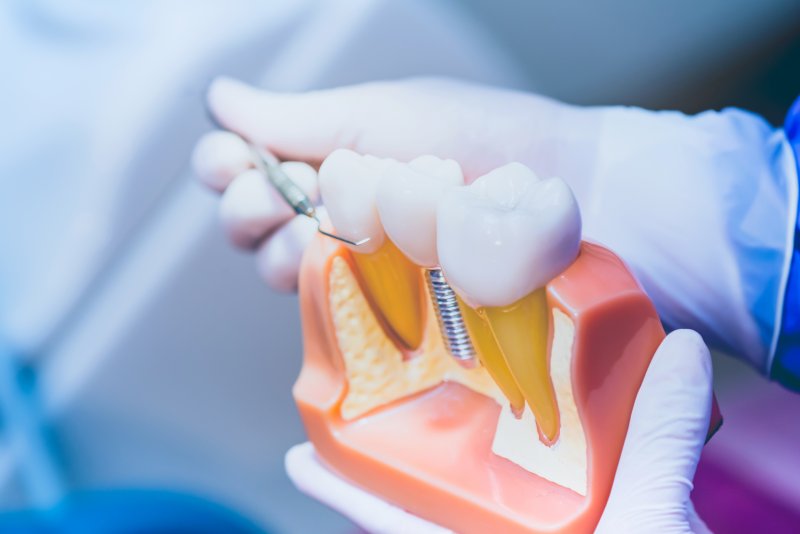
If you’ve never gotten dental implants before, then you may be confused by some of the terminology used during your initial consultation. This can pose a problem, as it’s hard to make informed decisions about the dental implant procedure when you aren’t entirely sure what your dentist is talking about. The guide below lays out some easy-to-understand definitions for 5 key dental implant terms you should know; learning them now can make things easier when you go to visit your cosmetic dentist in Kent.
1. Endosteal Implant
This is the name for the most commonly used type of dental implant. It takes the shape of a small screw or cylinder, and it is attached directly to the jawbone via surgery. A single endosteal implant can hold a crown; multiple implants are required for bridges and dentures.
The other type of implant you might hear about is an eposteal implant, which rests directly on the jawbone. This method is considered to be outdated and is only used in cases where the risk of advanced bone loss is high.
2. Osseointegration
Osseointegration is derived from the Greek word “osteon” meaning bone and the Latin word “integrare” meaning to make whole. It is the natural process of your bone tissue fusing with your dental implant, keeping it anchored in your mouth and essentially making it part of your body.
3. Abutment
The abutment is a small metal connector piece that will either be built directly into the implant or attached to the post after osseointegration has taken place. It is the part that the replacement crown, bridge, or denture is attached to.
4. Titanium
This is the material that most dental implants are made out of. It’s typically used because it’s highly biocompatible, making it easy for osseointegration to take place. Also, titanium allergies are very rare, so there’s not much of a risk of patients having an adverse reaction to a titanium implant being placed. If you do have such an allergy, zirconia might be used to make your implants instead.
5. Implant Restoration
The term “restoration” can refer to various things when it comes to dentistry. For implants, it refers to the false tooth or teeth that are attached to the implant posts. This can include a dental crown for replacing one tooth, a bridge for replacing consecutive teeth, a partial denture for filling gaps throughout the mouth, and a full denture for replacing an entire arch.
The above terms should help you grasp the basics while your dentist is explaining the dental implant process to you. Don’t be afraid to ask questions if there’s anything else you don’t understand. After all, you have the final say on what happens to your smile, so you have a right to be fully informed about the process.
About the Author
Dr. Manpreet Dhaliwal graduated in 2011 from the University of Detroit Mercy with Doctors in Dental Surgery. He currently enjoys providing high quality dental services at Complete Dental Care in Kent. He always takes the time to know his patients, and he will gladly answer any questions you have about dental implants or other services. To schedule an implant consultation, visit his website or call (253) 854-2714.

